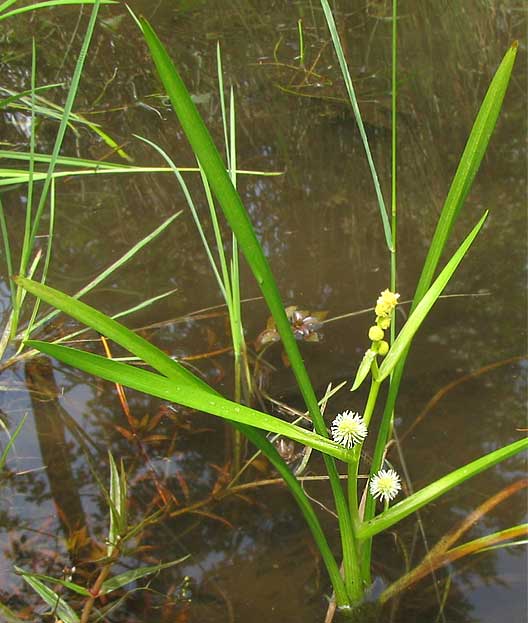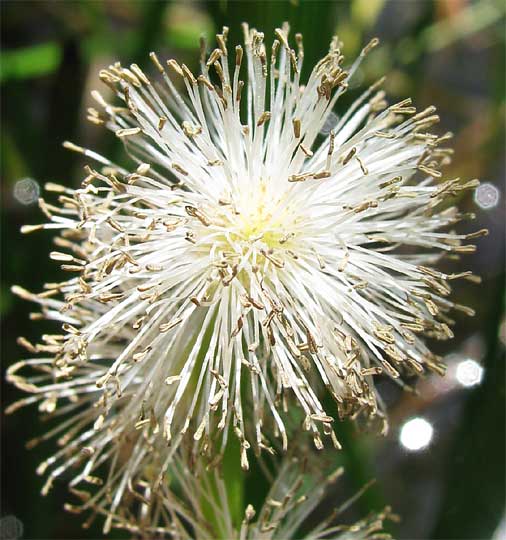Excerpts from Jim Conrad's
Naturalist Newsletter
from the June 21, 2009 Newsletter, issued from the Siskiyou Mountains west of Grants Pass, Oregon:
BUR-REED

Above you can see an interesting, elegant aquatic plant flowering in the pond above my trailer these days. One of its many common names is European bur-reed; it's SPARGANIUM EMERSUM. It bears so many English names because of its distribution over a large area in North America, Eurasia and elsewhere. It's unclear where its native land is. The USDA Plants Database lists it as native to Canada but invasive in the US. It's found all through the US except in the Southeast.
You can see that it emerges from standing, shallow water and produces spherical flower heads arranged in a distinctive zigzag fashion. The lower flower clusters are composed of strictly female flowers while the upper ones bear strictly male flowers. You can see a lower female cluster consisting of dozens of crammed-together, green ovaries connected to their white stigmas by slender, green styles below:

Pollen grains will germinate on the white stigmas, send their rootlike pollen tubes bearing the male sex germs down through the styles to the female ovules deep inside the ovaries, then later the ovaries will develop into fruits, and the ovules into seeds inside the fruits. You can see a head of male flowers below:

That's a collection of nothing but hundreds of stamens, each stamen composed of a slender, white filament atop which stands a small, brown, baglike anther that splits open to release pollen. From what I can see the female flowers below mature before the male flowers do, thus diminishing or precluding the possibility that a plant's male flowers will pollinate its own female flowers.